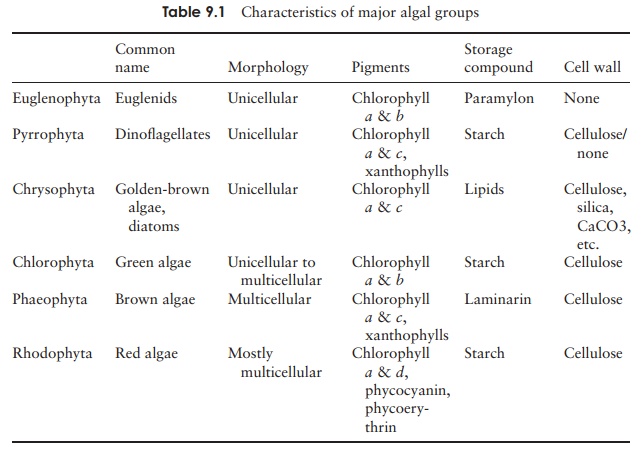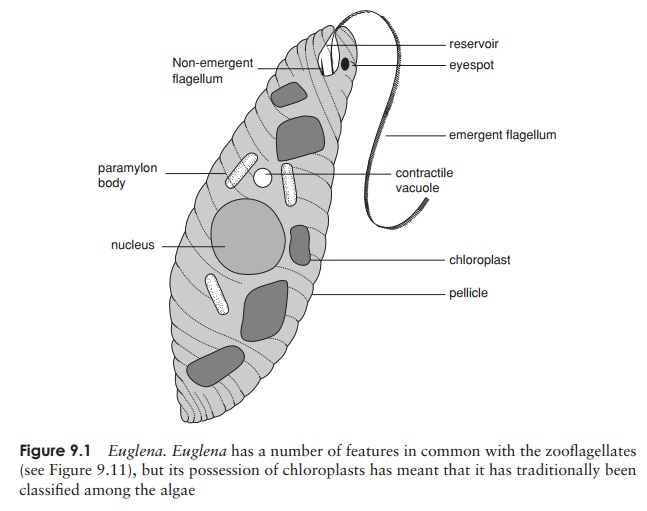Chapter: Essential Microbiology: Protista
Structural characteristics of algal protists
Structural
characteristics of algal protists
All algal types are eucaryotic, and therefore contain
the internal organelles, that is, nuclei, mitochondria, endoplasmic reticulum,
ribosomes, Golgi body, and in most instances, chloroplasts. With the exception of
one group (the Euglenophyta), all have a cellulose cell wall, which is
frequently modified with other polysaccharides, including pectin and alginic
acids. In some cases, the cell wall may be fortified with deposits of calcium
carbonate or silica. This is permeable to small molecules and ions, but
impermeable to macromolecules. To the exterior of the cell may be one or two
flagella, with the typical eucaryotic 9 + 2
microstructure , which may allow unicellular types to move
through the water; cilia are not found in any algae.
The characteristics used to place algal protists into
different taxa include the type of chlorophyll present, the form in which
carbohydrate is stored, and the structure of the cell wall (Table 9.1). A group
not considered here are the cyanophytes, previously known as the blue-green
algae; although they carry out oxygenic photosynthesis, they are procaryotes,
and as such are more closely related to certain bacteria.


Related Topics